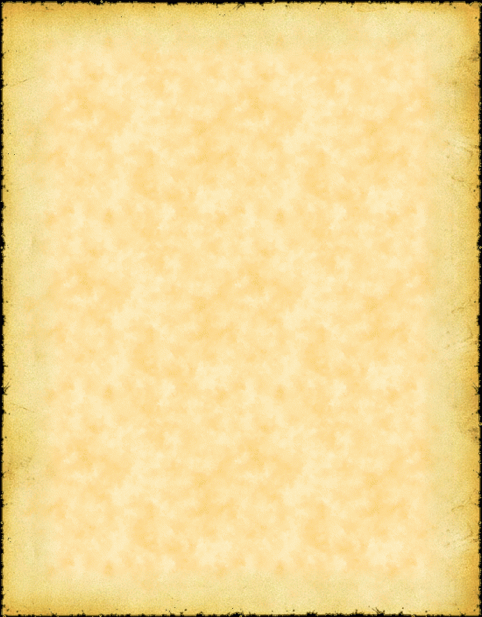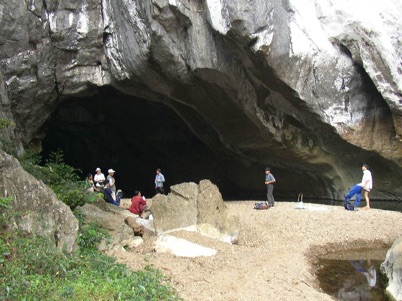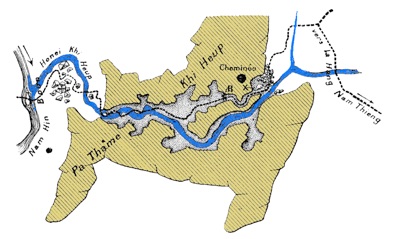Tham Heup - 1902

Caving on a horse back !
Paul Macey is the representative of the French Trade Union for Haut Laos. Established in Luang Prabang in 1890, he collaborated with the members of Pavie’s mission. He becamed administrator of Khammouane in 1901. At the request of Pavie and Martel, he published in Spelunca, in 1908, an account of his underground explorations in Laos. His first exploration is Tham Heup, at the outlet of the Nam Hin Boun gorges in the Mekong plain.

In Laos, these early underground incursions were more simple visits rather than explorations, because Cupet, Counillon and Macey had been preceded every day by the Lao people. The visited tunnels are indeed easy pathways linking valleys otherwise almost inaccessible.
However, Paul Macey, definitely excited by his discovery of the underworld in Tham Heup, has the privilege to have completed the first true caving exploration in Laos. The story, told in the Spelunca 1908 report, deserves to be known ...


“Thame Khi Heup was visited by us, in 1902; that was our first exploration. Accordingly, the description below apply also to other underground passages, for what regards the picturesque part; […]
The orientation of the underground passage, from the entrance to the exit of the river, is roughly East-West. A glance to the sketch [opposite] can confirm this indication, but will give only an imperfect idea of the impressive character of the underground passage in which we walk from surprise to surprise.
Every fifty steps, our lamp, although very imperfect, shows us new and varied decorations ! Pulpits; small forts; silhouettes of fantastic or grotesque animals; huge organs with enormous pipes; amphitheater terraces; chairs for Titans; elegant pillars and majestic vaults which we might imagine being transported from some gothic cathedral, etc. Besides, the light is reflected and amplified on the thousands facets of stalactite and stalagmite cristals in the most unforeseen forms ! There are also bizarre folds and crevices; unexpected cracks; caves, and chambers, and at times, rays of a dream green light issued from invisible shafts in the rock.
In the dry season, the water depth of the Houei Khi Heup, in the underground passage, varies from 40 centimeters to more than 2 meters, depending on the place, due to the height variations of the river bed; this requires some swimming through parts of the course.
During the wet season, there are three to four meters of water above the low-water level, and we can then navigate in canoe without any difficulty; the slope being almost nil, at this moment.
The eastern entrance of the underground passages, going downstream, has a 20 meter height for a 30 meter width. A collapse of the ceiling has blocked a portion of this entrance, so that the stream which previously was divided into two branches inside the cave, flows now only in the left branch, remained free, bouncing and roaring formidably.
During floods, the Houei Khi Heup discharge some of its waters into the right branch, through the collapsed blocks; but the water never exceed a certain point (X, on the sketch). Still, the water reaches this point only during exceptional floods; because between point X and point R, stands an enormous pillar, perforated by a bent corridor, at least two meters wide, of which the floor is raised several meters over modern floods level. This corridor is used as passage by the pedestrians, and as in our case, by ourselves and our horses.”
Macey P.,1908. Cours souterrains du Cammon au Laos. Spelunca, Bulletin et Mémoires de la Société de Spéléologie, VII, pp. 21-23.


Tham Heup - Exploration sketch of Macey (1902)

Downstream entrance of Tham Heup © J. Burrows - 2004


The Tham Heup resurgence (Lucien Rudaux)


